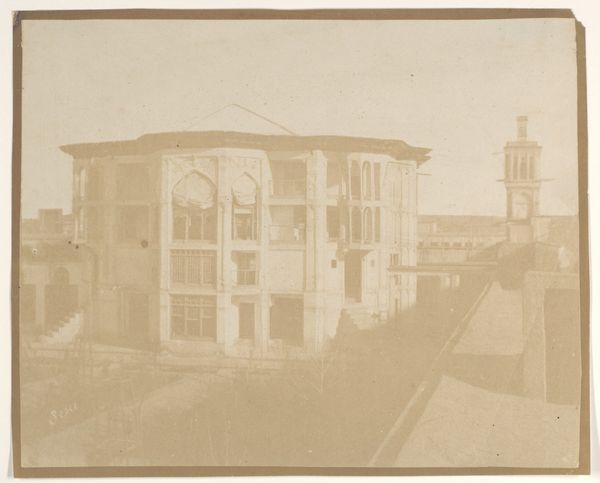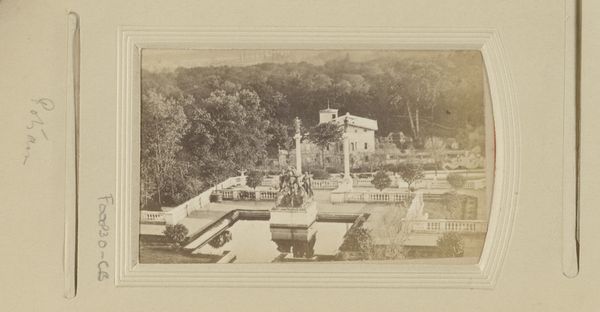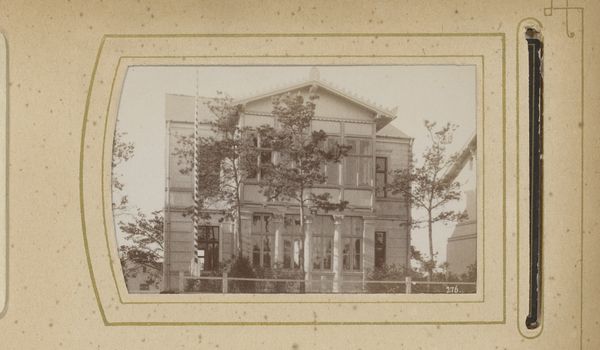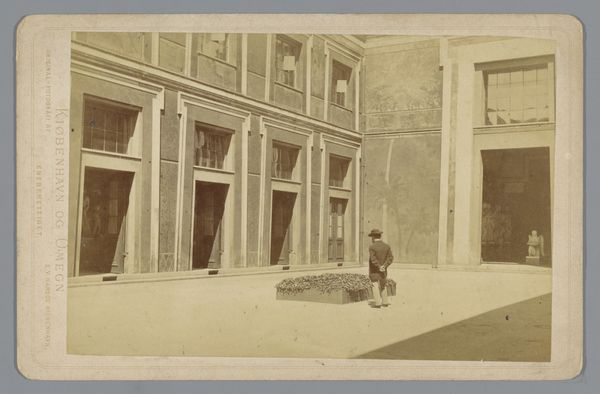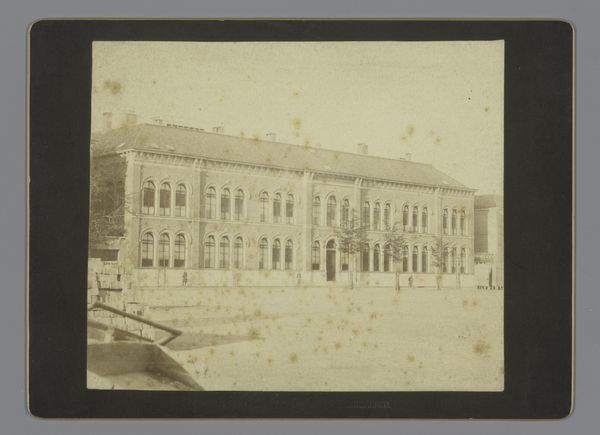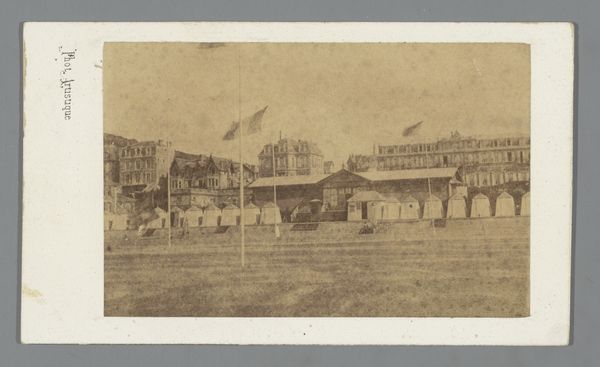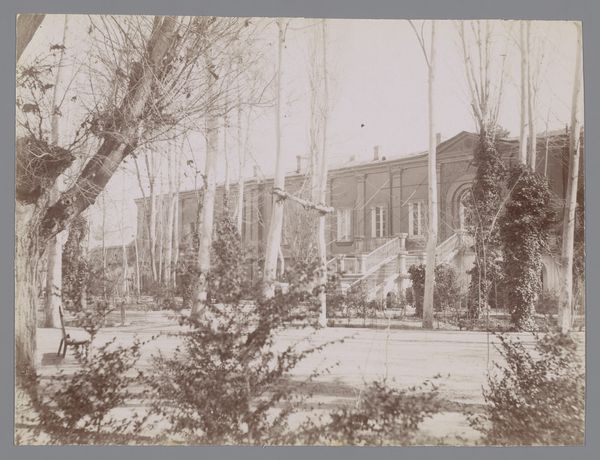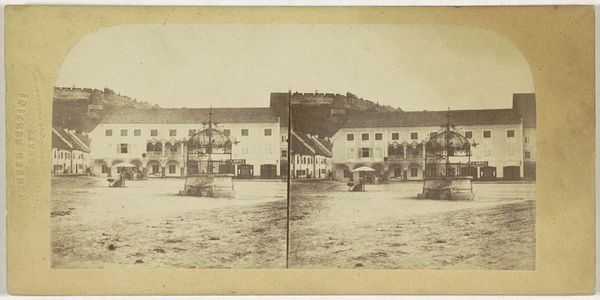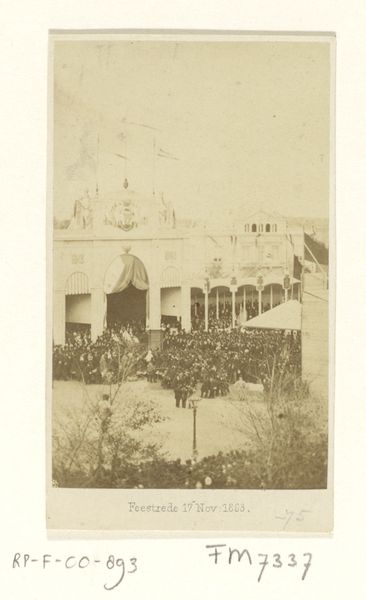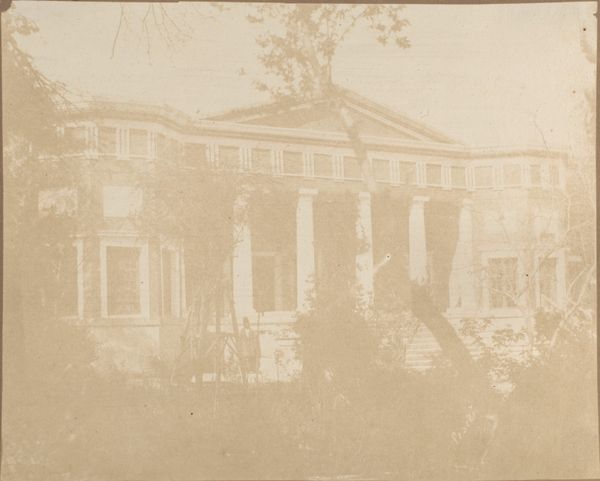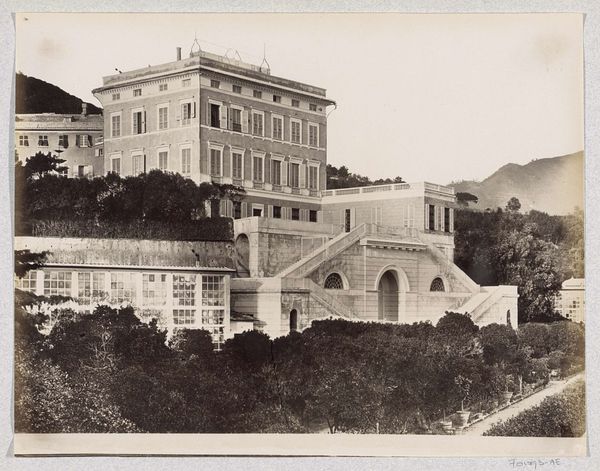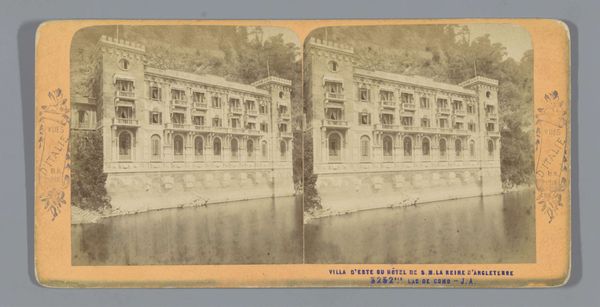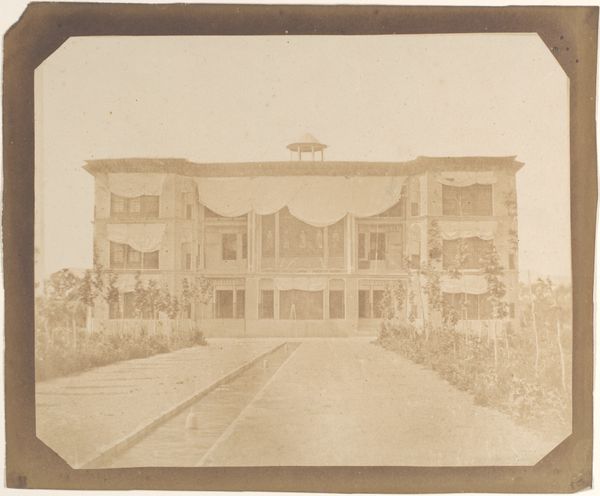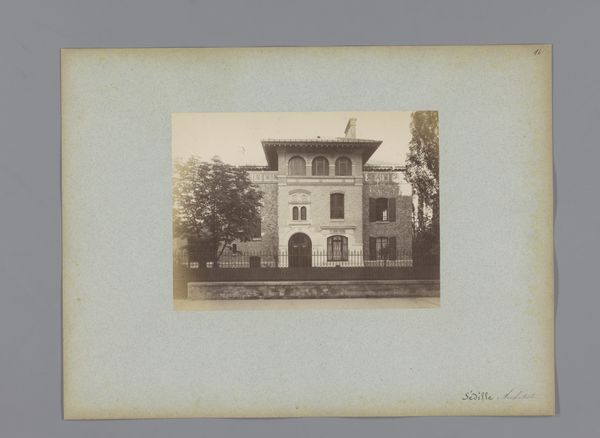
#
photo of handprinted image
#
aged paper
#
toned paper
#
vintage
#
photo restoration
#
colourisation
#
archive photography
#
historical photography
#
old-timey
#
mountain
#
19th century
#
building
Dimensions: height 87 mm, width 53 mm
Copyright: Rijks Museum: Open Domain
Editor: Here we have "Gezicht op het casino te B\u0103ile Herculane" by Carl H\u00e4ndl, dating from between 1860 and 1880. The materials... well, it seems to be an aged photographic print. The architecture is quite grand. What do you see when you look at this photograph? Curator: Well, first, let's think about the materials and the means of its production. This is not just an image, but a manufactured object from a particular era. We should consider the availability and cost of photographic materials in the mid-19th century, the labour involved in creating this print, and how it might have been consumed or distributed. What do you notice about the paper itself? Editor: It has definitely aged. There is a slight yellow tint, and some spotting too. Almost like a faded memory of the place it depicts. Curator: Exactly. So consider, the material decay is a visible marker of time and its value. We also need to think about this casino as a place of consumption. This image, showing what must have been a highly prized luxury establishment, would then also have been available for purchase by visitors who wanted to recall their holiday. In doing so they create and continue to engage with that high society. What do you think of this relation? Editor: That makes a lot of sense. Buying an image as part of the tourist experience… It blurs the line between documentation and a consumer good, reinforcing social and economic strata. This photograph acted as a record and as a sort of souvenir that also spoke about social standing. Curator: Precisely. Considering that context adds layers of understanding to what might appear simply as a record of an attractive building. It really highlights the intricate connections between production, consumption, and social context. Editor: Definitely. Thinking about photography not just as art, but as a manufactured product that can say so much about social conditions and desires gives me a whole new outlook. Thanks!
Comments
No comments
Be the first to comment and join the conversation on the ultimate creative platform.
